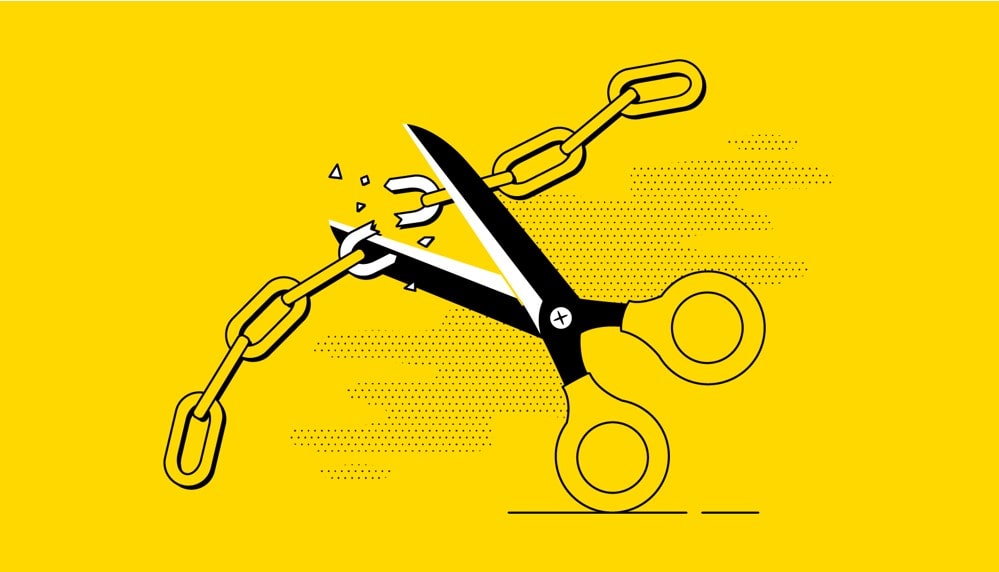What Is Disavow In SEO?

Hand off the toughest tasks in SEO, PPC, and content without compromising quality
Explore ServicesIf you are wondering what is disavow in seo, this is your lucky day.
SEO stands for Search Engine Optimization. The objective of SEO is to gain traffic from search engines like Google or Bing. One way of doing so is by creating backlinks to the website you want to optimize. Yet, some backlinks may be unfavorable because they are spammy links or low quality. This can harm the site being optimized and its ranking on search engine results pages (SERPs).
You can take manual action when you have unwanted backlinks pointing to your site and start disavowing low-quality links with a backlink audit. This article looks at what disavowing is, why it’s important for your SEO, and how you can go about doing it properly.
What is Disavow in SEO?
The process of removing bad backlinks that are deemed spammy is called disavow.
Basically, a website owner can say “I don’t like this link; please remove it from the search engine index”. The search engines then remove that link from their index. The effect of this action is that no search engines will count the link anymore and will not show it on any of their SERPs.
In other words, if a search engine shows a link to a website, and the website owner says “I don’t like this link” [informally known as an “omnibus” comment], the search engine will not show that link anymore. The link will be removed from its search engine index.

Source: Zotov
Why is Disavowing Important?
Disavowing can be useful in situations like when you want to remove the impact of a particular link that is bringing down your website in search engine rankings. It allows you to manage your website’s backlink profile and optimize it.
For example, you can disavow a link if it is spammy or you do not want the search engines to count it, because it has no value or importance for your website.
Really, you only want high-quality links in your website link profile, but it is inevitable that less desirable websites will eventually link to you. Because quality backlinks pay such an important role in your website algorithmic rankings, marketers want to avoid any negative SEO, of which spammy links are included.
Another reason to disavow a link is if you consider the website or page that the link is pointing to as being a competitor of yours, with an adverse effect on your brand, either from a search engine rankings perspective, from an imagery perspective (e.g. not suitable for your brand and theme) and/or from a SERP perspective (i.e. it is competing with your “own” content).
Disavow FAQ
What is disavow tool in SEO?
A disavow tool allows you to automate the disavow process. If you use the disavow tool, the search engines will take action on your behalf instead of your making manual requests.
You will be able to choose the links for which you want to disavow selectively. This can be very useful if you have a large number of backlinks that need to be counted, as it may take considerable time and effort if done manually.
Should I disavow backlinks?
One thing to consider is whether you can benefit from disavowing a link. For example, will it actually hurt you if a link was from your competition and is now being disavowed?
In this case, re-targeting the site owner may be a better option. In general, you should be aware of the previous actions of a website that has been linked to by yours. This can help prevent unwanted consequences in your links’ metrics, such as reputation or traffic impact.
When should you disavow links?
There are a few scenarios in which you should consider disavowing links:
- When a link has been identified as spam or irrelevant by an SEO or content team.
- When a link has been added without your knowledge and you prefer to avoid its effects on your search engine rankings.
- When a link has been acquired from a link scheme and you do not want the search engines to count it.
- When a competitor is engaged in a competitive campaign against your website, and you wish to minimize the effect of their linking efforts on your site, especially if they have engaged in aggressive acquisition tactics such as paid links or spammy link building.
- When there is a potential for legal action against Google or your website from webmasters who have been affected by your linking practices.
How do I remove bad inbound links?
You can remove bad inbound links using Google Webmaster Tools or Google Search Console. In these tools you can also see the status of each link to your site, and if they are already counted or not. You can then submit a request to remove the links that you do not want.
Summary
Hopefully, this article has given you a better understanding of what is a disavow in SEO.
Controlling the quality of backlinks to your site is imperative for a top-performing SEO website, making the ability to disavow links an important strategy in website management.
If you have any further questions regarding disavowing in SEO, or would like to learn how we can help boost your SEO rankings, please reach out today.
Hand off the toughest tasks in SEO, PPC, and content without compromising quality
Explore ServicesWritten by Adam Steele on November 13, 2021
COO and Product Director at Loganix. Recovering SEO, now focused on the understanding how Loganix can make the work-lives of SEO and agency folks more enjoyable, and profitable. Writing from beautiful Vancouver, British Columbia.





